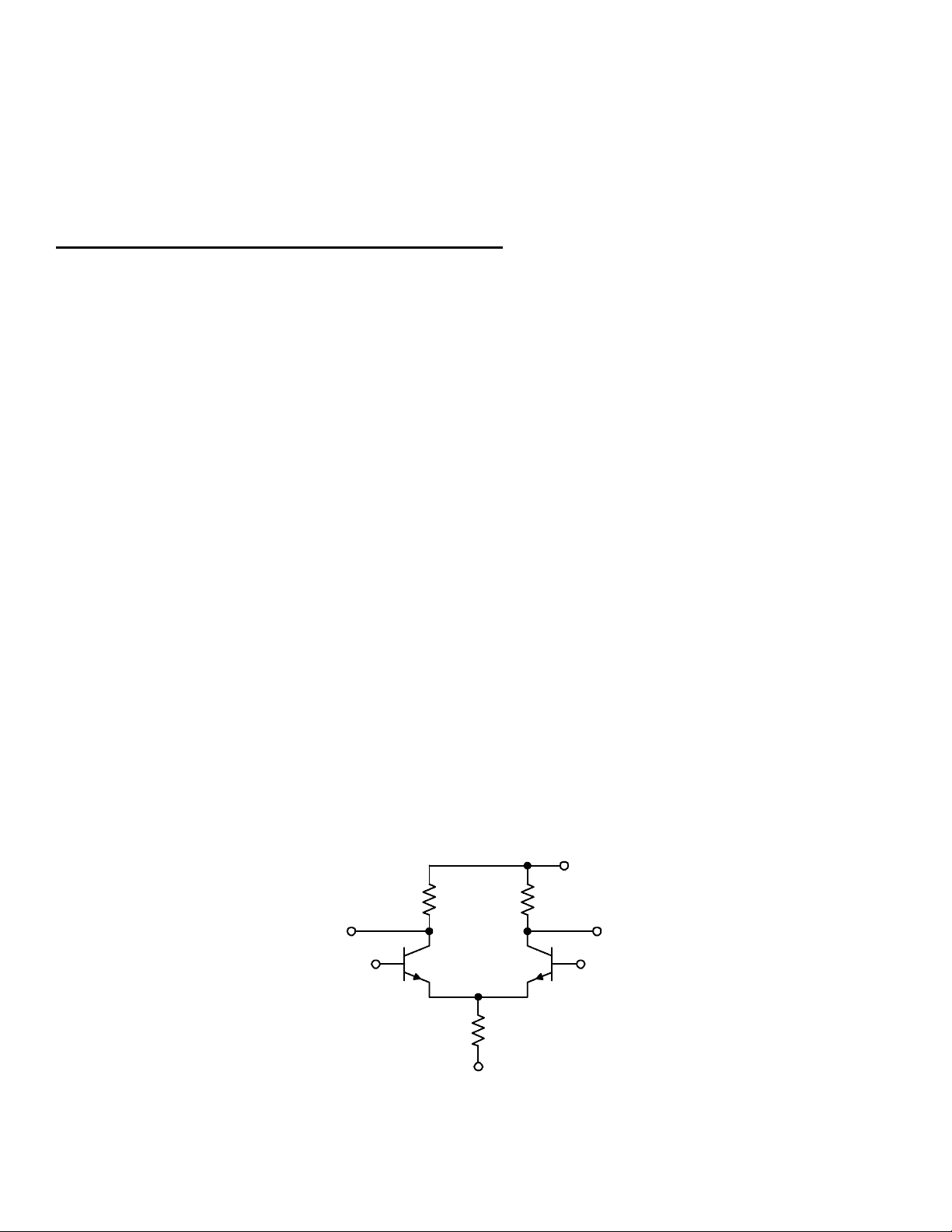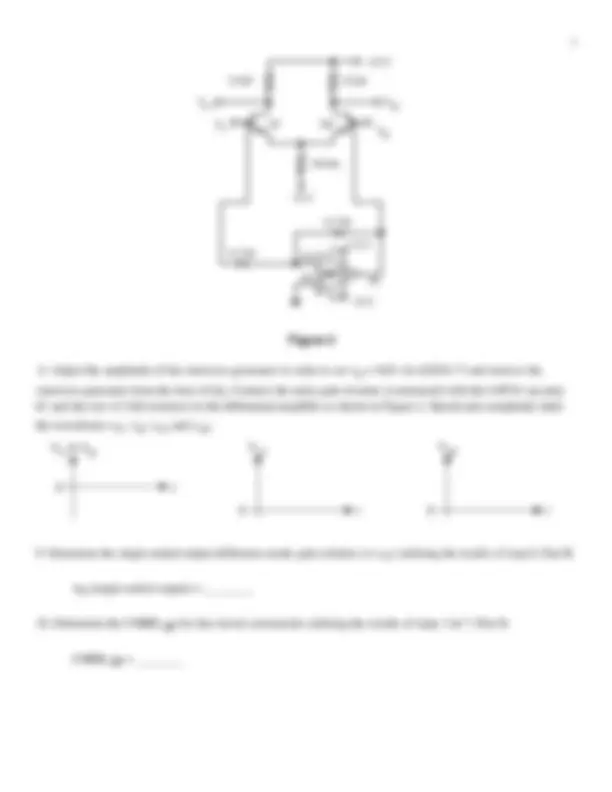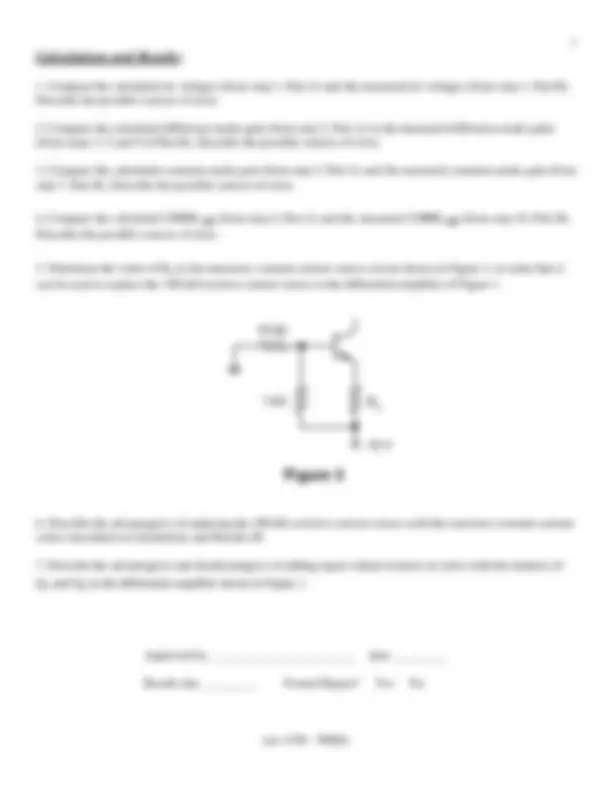




Study with the several resources on Docsity

Earn points by helping other students or get them with a premium plan


Prepare for your exams
Study with the several resources on Docsity

Earn points to download
Earn points by helping other students or get them with a premium plan
Community
Ask the community for help and clear up your study doubts
Discover the best universities in your country according to Docsity users
Free resources
Download our free guides on studying techniques, anxiety management strategies, and thesis advice from Docsity tutors
A laboratory exercise for ecet 2310 (electronics ii) students to predict and measure the dc and ac performance of a differential amplifier. The exercise involves calculating predicted voltages and currents, determining gain and common-mode rejection ratio (cmrr), and comparing calculated and measured results.
Typology: Lab Reports
1 / 4

This page cannot be seen from the preview
Don't miss anything!



In this investigation you will predict the dc and ac performance of a differential amplifier. During the lab session you will build a differential amplifier and measure the actual performance of your circuit. You should expect reasonable agreement between the predicted performance and the actual performance.
For this part, assume that Q 1 and Q 2 are perfectly matched and have the following specifications: (Note: some of these specifications may not be needed to perform the required calculations) hFE = hfe = 500 hib = 26 mV/IE VBE = 0. 6 V hoe = 10 μS
Ad (single-ended output) = ______
CMRR dB = ______
10 kΩ 10 kΩ
+15 V
Vi1 Vi
-15 V
Vo1 Vo
100 kΩ
Figure 1
Q1 Q
t
V (^) i 0 t
V (^) o
0 t
V (^) o
0
Ad (single-ended output) = ________
t
V (^) i 0 t
V (^) o
0 t
V (^) o
0
Ad (single-ended output) = ________
t
V (^) i 0 t
V (^) o
0 t
V (^) o
0
Acm (single-ended output) = ______
10 kΩ
1 kΩ (^) R (^) x
-15 V
Approved by ________________________ date _________ Results due _________ Formal Report? Yes No
(rev 5/99 - WRH)